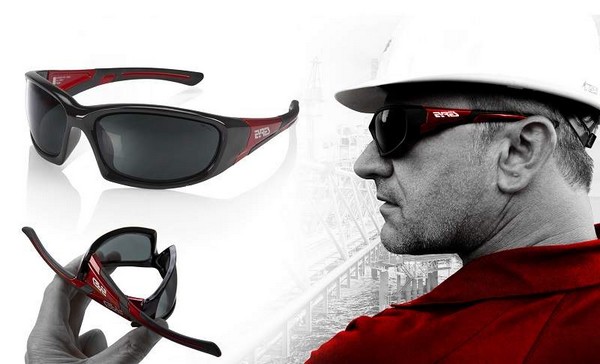Dust, chemicals, and flying objects are just a few of the common causes of workplace eye hazards. This article will highlight how you can protect yourself and your employees from these hazards.
The Occupational Safety and Health Administration (OSHA) requires employers to assess all the environmental risks to determine the type of face or eye protection that is needed for the job. For people in these hazardous workplaces, eyewear, like the Eyres safety glasses, is beneficial. Not only will it protect their eyes from these dangers, but it can also prevent other more severe injuries they might encounter in the conduct of their functions.

Among the hazards mentioned above, the most common and most damaging are flying objects. More than 50% of these injury-causing flying objects are smaller than the head of a pin in the workplace. These hazards include any of the following — sand, dirt, particles, chips, and fragments. And depending on the operation, these flying objects may be plastic, metal, or wood bits.
Processes that can put workers at risk
These work processes that can put workers at a high risk of flying object face and eye injuries include the following:
- Chipping
- Chiselling
- Drilling
- Grinding
- Machining
- Masonry work
- Powered fastening
- Riveting
- Sanding
- Sawing
- Woodworking
The right eye protection would largely depend on the extent and type of hazard. Safety glasses are fit for most factory and warehouse jobs. Safety goggles, like those from the line of Eyres safety glasses, are best for jobs dealing with flying objects.
- 5 Trendy Eyeglasses to Freshen Up your Bespectacled Look
- See Well, Look Good and Stay Safe: Choosing Prescription Safety Glasses
- Important Things to Consider Before Buying Motorcycle Riding Sunglasses
- Terrific Top 5 trends in glasses for men of our era
For impact resistance, polycarbonate lenses are ideal since the lenses can also be coated to make it scratch-resistant. And lastly, for jobs wherein flying objects can cause injury to the eyes and face, a face shield is necessary.
Effects of hazardous chemicals
Workplace chemicals can also pose an eyesight risk if no proper precautions are set in place. There are many chemicals in the construction, manufacturing, and other industries that can severely injure one’s eyes and cause blindness.
Corrosives and acids are some of the most dangerous chemicals. They can injure one’s eyes within a few minutes or seconds after contact. What is alarming is that these injuries can turn out to be permanent. Meaning, the worker can end up losing his sight.
Vapours, mists, sprays, and splashes can also cause lethal exposures to unprotected faces and eyes. If you handle chemicals in the workplace or are directly exposed to it, you have a very high exposure risk.
The mandatory eye protection for people dealing with hazardous chemicals includes goggles that are chemical-resistant and goggles with an underlying face shield. These can protect you even if the exposure level is very high. Workers must understand that face shields are not enough if you are dealing with hazardous chemicals. With this in mind, you must be very strict in enforcing the face shield and goggles rule.
Dust
Depending on the amount of air and type of dust, these minuscule particles can threaten your eyesight. With this in mind, it should be mandatory for employees to have a certain kind of eye protection. Dust will not only cause redness and eye irritation but also corneal abrasion. The latter case, according to doctors, requires removal of the foreign material aside from topical medications.
The final takeaway
Both the employee and employers should keep the workplace safe and hazard-free. With ample eye protection and the use of the right eye protective gear, sick days and severe workplace injuries can be prevented.
